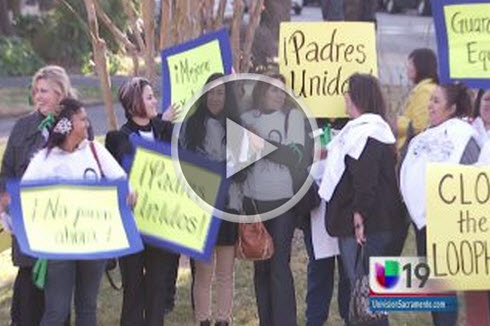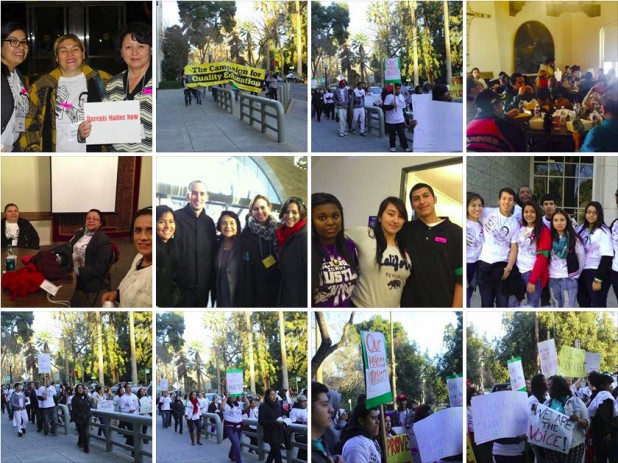Adoption of Regulations
In January 2014, the State Board of Education approved emergency regulations defining spending rules and a template for the Local Control and Accountability Plan (LCAP).
The spending regulations describe how districts must use Local Control Funding Formula dollars to increase or improve services for students who are low-income, learning English, or in foster care. As part of these rules, the Board created a standard “proportionality calculation” for districts to use to determine the minimum amount of money they must spend on high-need students.
Each district must include this figure in its LCAP, which is a comprehensive document describing a district’s goals, actions, and expenditures across eight state priority areas. In addition to identifying how the district will serve all students, it must also provide detail on how supplemental and concentration funding will be spent on actions and services for high-need students. Districts must also explain how those investments will “increase or improve services” for high-need students.
These regulations reinforce LCFF’s goal of creating a more equitable and transparent education funding system. Now, the state is collecting public comments on these regulations as it works on the permanent regulations. The public will also have an opportunity to provide comments at a March board meeting at a March 17 public hearing.
District Planning
Most districts are already engaged in LCFF planning for 2014-15. Local Control and Accountability Plans and related budgets must be adopted in a public hearing by July 1, 2014. Before then, districts must:
- Consult school employees, parents, and students. Some districts are surveying parents, students, and/or staff to hear their ideas on what the district should be doing. Some districts are also holding public forms to hear public input.
- Present proposed plans to parent advisory committees and English learner parent advisory committees (if they have at least 15% English-learner students) for feedback. They must respond in writing to the feedback of these committees. Most districts are in the process of forming these committees, but we are hearing that this process often lacks transparency.
- Present their plan at a public hearing and listen to comments. Before then, the public will also have an opportunity to provide written feedback.
What Districts Should be Considering
As they decide how to spend their LCFF funds, many districts are facing competing pressures. Unions representing teachers and classified staff are seeking pay increases. Cautious administrators want to pay down structural deficits. We believe the spending regulations and LCAP template make it clear that such expenditures must be made with base funding.
Supplemental and concentration funding must be used to increase or improve services for low-income students, English learners, and foster youth. We propose the following types of investments:
ACADEMIC SUPPORTS
- Individualized academic planning and counseling
- College counseling, mentoring, and support around college preparation, application, financial aid, and placement
- Tracking progress of high-need students into college and providing transitional supports
- Adding/expanding summer learning programs
- Data systems to help identify struggling learners
- Targeted and appropriate intervention services, both within and outside the classroom, such as Response to Intervention (RTI) programs and paraprofessional support
- Extending learning time
- English language development services
- Individualized support for migrant, homeless, and foster youth to ensure they have the academic records, transportation, course enrollments, and advocacy they need to attend school and maintain progress toward graduation
SOCIO-EMOTIONAL SUPPORTS
- Positive behavior management and youth development programs and strategies
- Expanding access to counselors, social workers, and mental health services
- Mentoring or other programs, such as Advisory, to build positive peer and adult relationships
- Effective programs to improve school climate and safety, such as restorative justice
WRAP-AROUND & OTHER SUPPORTS
- Health, dental, and vision care, including access to school-based health clinics
- Systems for monitoring and improving student attendance in order to increase attendance, reduce chronic absenteeism, and decrease truancy
- Parent engagement programs in primary languages of high-need students
- Preschool and transitional kindergarten targeted at low-income families
- Education plans for foster youth, developed in collaboration with child welfare workers
EDUCATOR SUPPORTS
- Professional development on English language development strategies, the unique educational needs of students in foster care, behavior management practices, and instructional strategies aimed at supporting struggling learners
- Offering principals in high-need schools priority when it comes to hiring teachers
- Offering incentives and supports to teachers and principals working at or willing to transfer to the highest need schools

